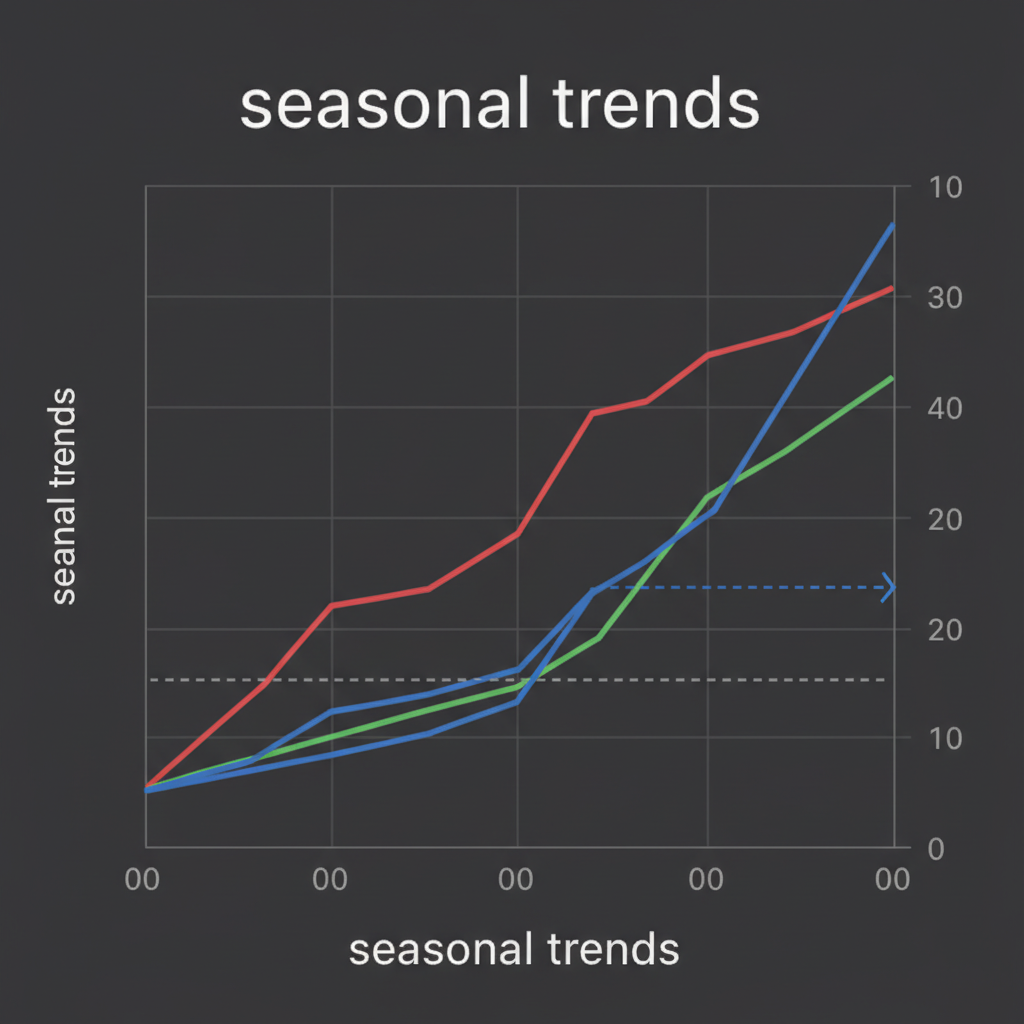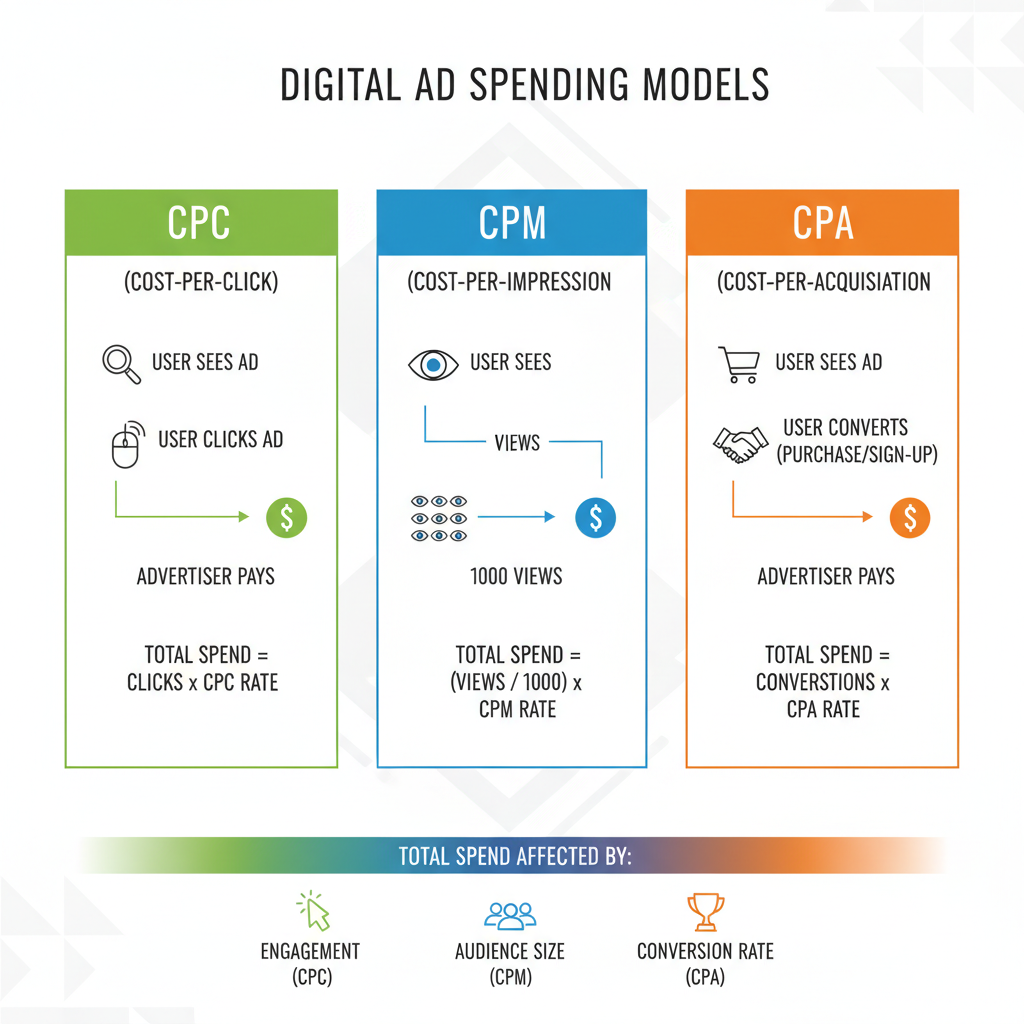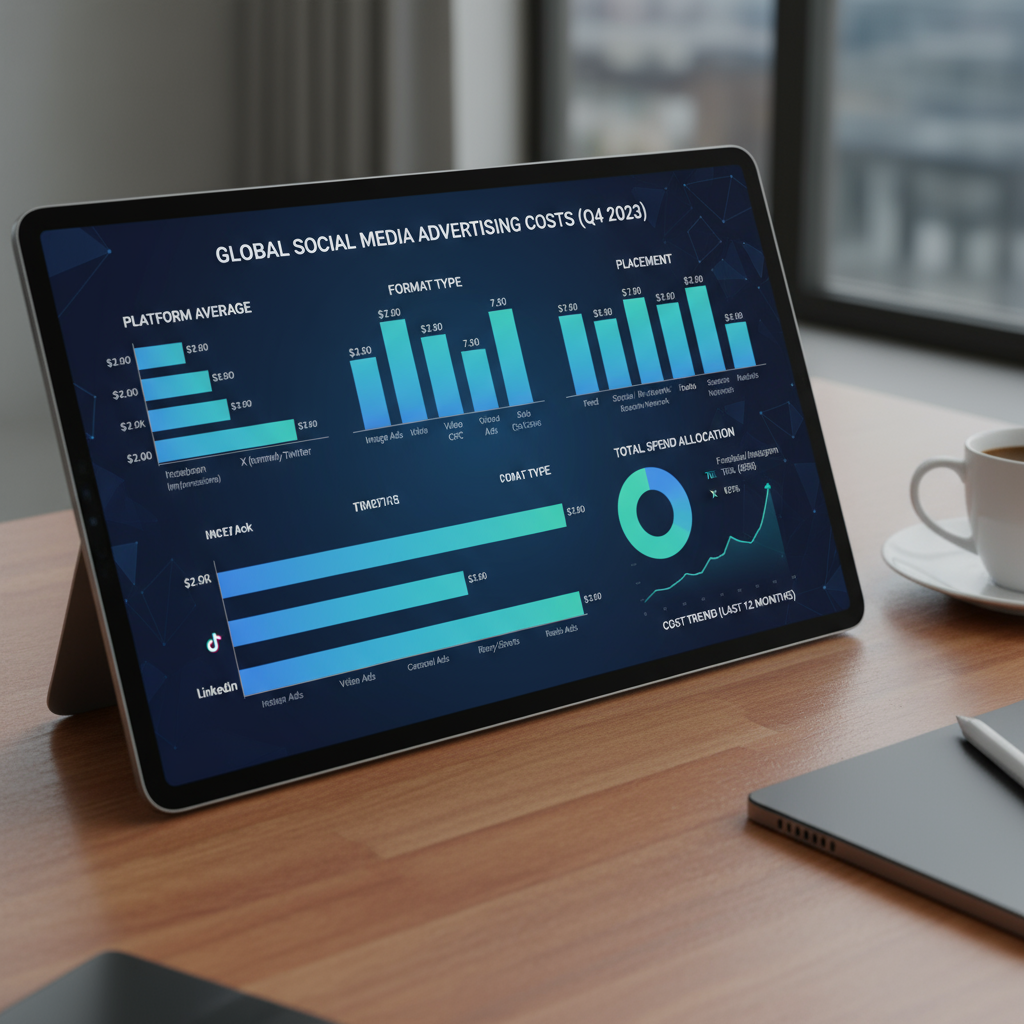Social Media Advertising Costs Explained and Compared
Learn how social media ad costs vary by platform, pricing model, and targeting, with CPC, CPM, and CPA comparisons to help optimize campaign ROI.

Understanding Social Media Advertising Costs
Social media advertising is a powerful way to connect with targeted audiences through paid placements on platforms like Facebook, Instagram, TikTok, LinkedIn, Twitter, and Pinterest. Effective campaigns can use simple image posts or complex video ads, with pricing generally tied to measurable actions such as impressions, clicks, or conversions. Understanding advertising costs on social media is critical for budgeting, maximizing ROI, and ensuring campaigns reach the right people efficiently.
The cost structure in social media advertising depends on several factors:
- Platform choice: Each social network has unique demographics, engagement levels, and cost patterns.
- Ad objective: Goals such as clicks, impressions, conversions, or engagement influence spend.
- Bidding model: CPC (Cost Per Click), CPM (Cost Per Mille), or CPA (Cost Per Action).
- Audience targeting depth: Granular targeting may raise cost but improves relevance.
- Ad quality and relevance: Higher relevance scores can lower cost.
- Seasonal demand: Peak periods can trigger price surges.

---
CPC, CPM, and CPA Models: Detailed Comparison
Selecting the correct pricing model is essential to control advertising costs on social media. Each has distinct benefits and drawbacks:
- CPC (Cost Per Click): Pay when users click an ad; best for boosting site traffic.
- CPM (Cost Per Mille): Pay for every 1,000 ad impressions; ideal for brand awareness campaigns.
- CPA (Cost Per Action): Pay when a specific action, such as a purchase or signup, happens; suitable for conversion-driven campaigns.
| Model | Advantages | Disadvantages | Best Use Cases |
|---|---|---|---|
| CPC | Pay only for clicks; effective for targeted traffic | Costs can rise with high CTR; less focus on visibility | Lead generation, website visits |
| CPM | Strong visibility; fixed cost per thousand impressions | No guarantee of engagement | Brand awareness, broad reach |
| CPA | Pay only for actual conversions | Needs advanced tracking; more complexity | E-commerce, sign-ups, app installs |
---
Pricing Across Major Platforms
Costs differ across networks due to variations in audience size, competition, and user behavior. Here’s a general breakdown:
| Platform | Average CPC | Average CPM | Notes |
|---|---|---|---|
| $0.50 – $2.00 | $5 – $12 | Wide reach, robust targeting tools | |
| $0.70 – $3.00 | $6 – $14 | Visual focus, younger audience | |
| TikTok | $0.10 – $1.00 | $3 – $10 | Strong engagement, short videos |
| $2.00 – $6.00 | $6 – $10 | Professional, B2B targeting | |
| $0.50 – $2.00 | $6 – $8 | Event-based, trending topics | |
| $0.10 – $1.50 | $4 – $10 | Strong for lifestyle and retail |
---
Impact of Audience Targeting on Ad Spend
Highly specific targeting can increase advertising costs on social media. Key factors include:
- Demographics: Age, gender, geography.
- Interests and behaviors: Shopping habits, hobbies.
- Custom audiences: Uses your proprietary data like email or website visitors.
- Lookalike audiences: Finds users similar to existing customers.

While narrower targeting can raise costs per user reached, it reduces wasted impressions by focusing on quality leads.
---
Ad Placement and Format Influence
Placement and format affect both engagement and cost:
Common Formats
- Feed ads: Appear in main content streams; balanced reach and pricing.
- Story ads: Full-screen vertical format; known for strong engagement rates.
- Video ads: Higher production investment but can deliver better CTR.
- Carousel ads: Showcase multiple images or videos; good for product storytelling.
- Reels/short videos: Trend-friendly and highly consumable content.
Video ads may carry higher CPM rates yet achieve lower CPA due to strong audience engagement.
---
Seasonal Trends and Price Fluctuations
Certain periods drive up social media ad costs:
- Holiday shopping: November–December.
- Back-to-school: August–September.
- Major sales events: Black Friday, Cyber Monday.
These spikes can increase CPC/CPM by 20–50%. Early planning and pre-season ad placement can mitigate expenses.
---
Budget Planning Strategies
Align your budget with business size and objectives:
- Small businesses: Start with test budgets ($500–$1,000/month), focus effort on one platform.
- Medium businesses: Diversify platform use; distribute spend based on past ROI; try varied formats.
- Large enterprises: Adopt complex multi-platform strategies, automation, and deep A/B testing.
Budget frameworks should build in funds for experimentation, scaling hits, and fixing underperformers rapidly.
---
Tips for Optimizing Ad Performance
To lower advertising costs on social media:
- Create compelling, high-quality visuals and messaging.
- Conduct A/B tests regularly.
- Retarget previous visitors or engagers.
- Leverage analytics to refine audience targeting.
- Design for mobile-first interaction.
---
Common Mistakes Increasing Ad Spend
Avoid:
- Excessively narrow targeting without relevance.
- Poor-quality creatives that underperform.
- Ignoring analytics and data insights.
- Choosing an unsuitable bidding model.
- Skipping frequency caps, causing audience fatigue.
---
Measuring ROI and Adapting Strategies
ROI Calculation:
ROI = (Net Profit from Ads – Cost of Ads) ÷ Cost of Ads.
Track KPIs like CTR, conversion rate, cost per conversion, and Customer Lifetime Value (CLV).
Adjust tactics by:
1. Identifying weak audience segments.
2. Raising bids for profitable groups.
3. Pausing costly, low-return campaigns.
4. Updating creatives for freshness.
---
Summary and Next Steps
By mastering cost drivers, selecting the right pricing model, and consistently optimizing, you can ensure advertising costs on social media yield high returns. Whether you run a startup or global brand, strategic planning and diligent monitoring are key.
CTA: Begin refining your social media ad strategy today to capture audience attention while protecting your budget.




